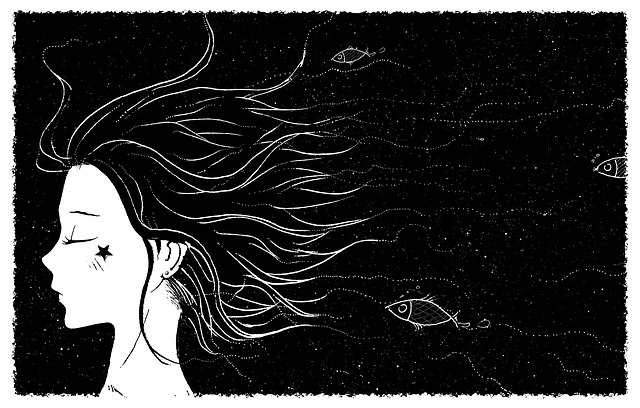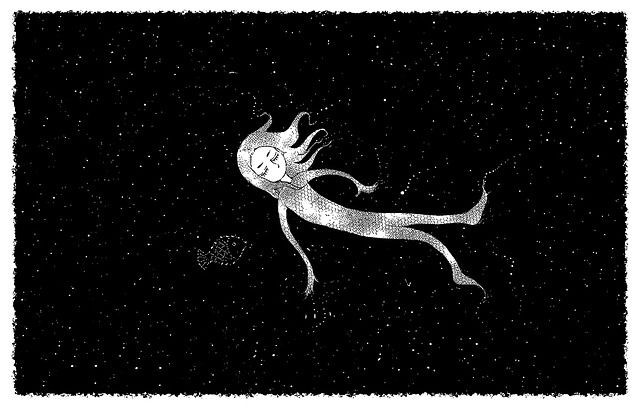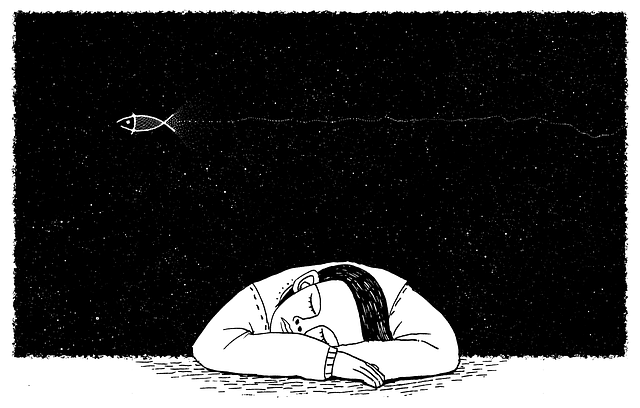How To Fall Asleep In 60 Seconds: I Practiced The 4-7-8 Breathing Technique For One Month

Tossing and turning, eyes opening and closing, and the inability to keep my mind from wandering while I try to sleep, are what most of my nights are made of. After midnight, I grow restless and disgruntled in my dark and silent bedroom as I’m unable to ease my mind and body into a deep slumber. Before I realize, it’s morning, and I’ve clocked in a maximum of five hours of poor sleep.
On a Sunday night, I decided to try something that would eventually give me one of the best sleeps of my life — breathing.
The 4-7-8 Breathing Exercise
Simple inhales and exhales can help you get the good night’s rest you deserve — in just 60 seconds. In May of last year, Dr. Andrew Weil, a physician and a “guru” for holistic health and integrative medicine, popularized the sleep technique known as the “ The 4-7-8 Breathing Exercise,” or the “Relaxing Breath.”
This holistic breathing technique is based on pranayama, an ancient Indian practice that means “regulation of breath.” While sitting in an upright position, you simply place the tip of your tongue against the ridge of tissue behind the upper front teeth and keep it there through the entire exercise (this will make a “whoosh” sound as you exhale). This is followed by breathing in through your nose for four seconds, holding your breath for seven seconds, and exhaling through your mouth for eight seconds. Weil suggests repeating this for three breathing cycles, for a total of four breaths. Eight breathing cycles is the absolute maximum.
When I first started practicing this method, I chose to lay in my bed, and would speed up my counting after inhaling for four seconds and holding my breath for seven. I thought to myself at 1 a.m. (my usual sleep time): "If I count faster, I can be done faster." Alas, I knew I would only be cheating myself in the end, so I decided to stick with it, and repeat the 4-7-8 breathing cycle, without taking breaks, or going back to regular breathing.
After two nights of this type of breathing, I could feel myself drifting away, as if my mind was wandering away while my body remained still. I could feel my heart rate begin to slow down, my mind start to ease, and my body physically relax as if it were one with the mattress. I was overpowered by the feeling of sedation — not being able to remember getting past the second breathing cycle. Before I realized it, I went from counting to four and waking up the next day at 7 a.m., wondering if I reached my eight-count exhalation.

My sedative-like state is a typical symptom of the breathing exercise. Weil describes the technique as a “a natural tranquilizer for the nervous system” that eases the body into a state of calmness and relaxation. This slows down heart rate and increases oxygen in the bloodstream, relaxing the heart and the brain, because I’m in control of the breath in this situation.
Dr. Lindsay Bira, a clinical health psychologist and clinical researcher in San Antonio, Texas, says when we adjust our breath to be deeper, longer, and more controlled, we directly call into action the parasympathetic nervous system — the part of the nervous system that calms things down like heart rate, blood pressure, digestion, capillaries, and overall anxiety.
“Basically, breathing in this way and making the out-breath longer than our in-breath tells our brain the environment is safe and it is ok to calm down,” she told Medical Daily.
Breathing and The Nervous System
The rush hour commutes, deadlines, and living in the city can make it hard for anyone to catch their breath. These everyday triggers of stress activate the sympathetic nervous system, which is responsible for the stress response. Usually when I try to fall asleep, my mind thinks about how my day went and what I have to do the next day, meaning I tend to always live in the sympathetic nervous system. According to Bira, if we make a conscious effort to adjust the breath and let our parasympathetic take control, we can experience the benefits of stress reduction and relaxation.
So, when we choose to extend our inhale count to four, we're allowing ourselves to take in more oxygen, which affects the bloodstream as we hold our breath for seven seconds, and then emit carbon dioxide from our lungs as we exhale steadily for eight seconds. Moreover, the way our tongue is positioned during this exercise helps activate a pressure point, according to Dan Ferguson, an acupuncturist in Vancouver, Wa.
It “completes a circuit of two acupuncture channels that were made by the very first split of cells of you as an embryo,” he told Medical Daily.
This completes the circuit, which sets the foundation for relaxing the body, calming the nervous system and centering the mind.

Breathing Away Sleeping Disorders
I’m no stranger to sleepless nights — as a child and currently in adulthood, I suffer from night terrors. The parasomnia, which affects 2.5 percent of the adult population, has been linked to triggers such as anxiety, poor sleep, and fever. However, these episodes are usually infrequent and benign, occurring only once or twice a month. Deep breathing in yoga has helped calm me down and remove feelings of anxiety, while the sleep breathing technique has led me to get a better night’s rest — no night terrors included.
These exercises can benefit people with sleep disorders like insomnia. Evidence-based treatments for insomnia and other sleep issues usually include cognitive behavior therapy. It “focuses on adjusting the sleep environment, adjusting sleep behaviors, teaching the body how to relax effectively (e.g., diaphragmatic breathing) and addressing maladaptive thoughts that tend to promote anxiety at bedtime,” said Bira.
The focus on breath control and counting allows me to focus on something benign and exert control over stress-induced impulses like shallow breathing. The ability to control my breath, and not have it control me, has let me regain control of my body as I fall sleep.
Is 4-7-8 The Magic Number?
Weil has a magic formula that has proven to work, but does this mean we should all abide by this?
The breathing technique is supposed to be practiced twice a day — once in the morning, and once at night, but my yogi-like nature decided to save it for yoga. Yoga has plenty of breathing exercises that have allowed me to focus on my breathing and not my surroundings. Inhaling and exhaling as I stretch my limbs has given me a better sense of self control. Although breathing in yoga isn't based on the 4-7-8 method, it has helped me feel relaxed.
The 4-7-8 breathing pattern has led people to benefit from it, including me, but like anything, it’s not a one-size-fits-all approach.
“The point behind the sensationalized promise is to promote consistent practice. It is true that the most benefit comes with consistent practice of slowing the breath and breathing from the diaphragm,” said Bira.
She suggests practicing diaphragmatic breathing twice per day, 10 minutes each time. Doing so will allow us to exercise the diaphragm muscle, train our body how to relax effectively and on demand, and reduce emotional anxiety. Diaphragmatic breathing can be used as a “life line” for times of stress and to combat maladaptive thoughts.
The practice of breathing definitely helps the body and brain go to sleep.
So, did I really go to sleep in a minute or less?
Yes, but like any skill, it takes time to master. The key is to be mindful about breathing technique.
Next time you go to sleep, take a couple of breaths, and allow yourself to fall into a deep slumber.
Published by Medicaldaily.com



























